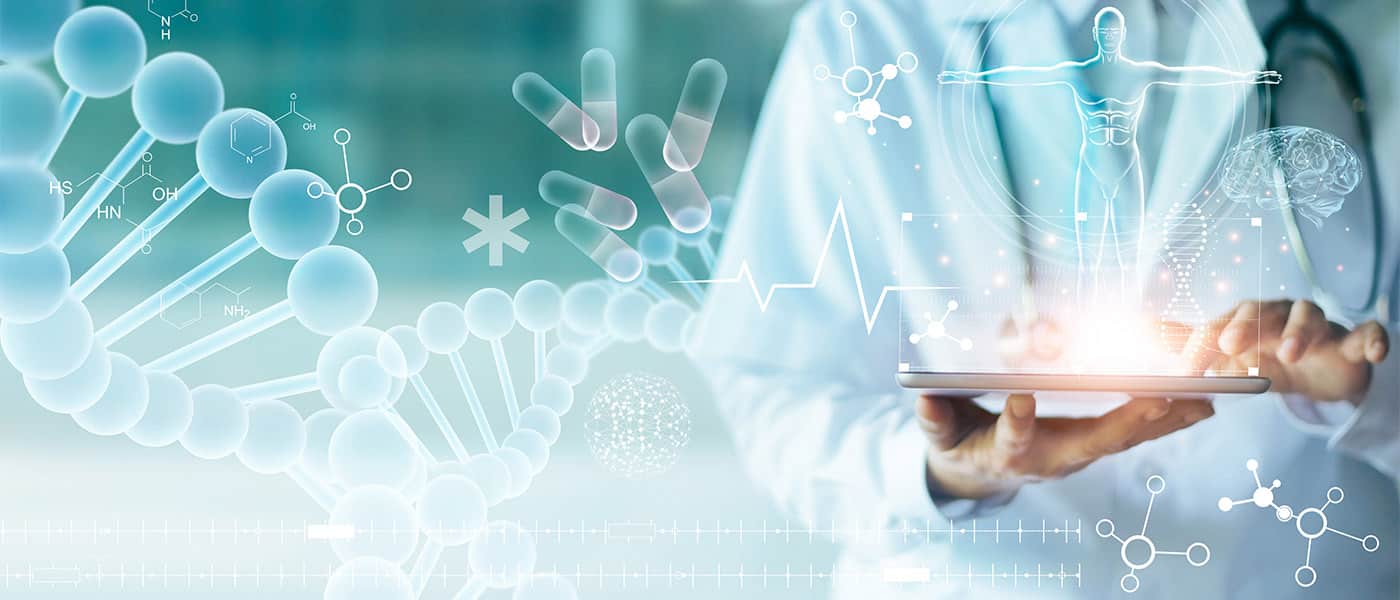In my previous blog, I discussed
How the Internet of Medical Things Is Transforming Health Care
, looking specifically at how the Internet of Medical Things (IoMT) – a connected infrastructure of devices, software, hardware, and services to process and analyze data for decision making by health care professionals -- is changing the way medical care is delivered.
In this blog, I will explore this subject further, sharing insights from our new report, Beyond the Hospital: Towards a Continuum of Connected Care. We will examine how healthcare providers are using the IoMT in ambulances, hospitals, nursing homes, long-term care facilities, and patient homes to deliver a continuum of connected care that allows them to improve patient outcomes, and optimize treatment processes. We will also look at some of the challenges healthcare organizations face in delivering connected care to patients, and how new solutions – like Sierra Wireless’s Ready-to-Connect devices -- can overcome these challenges.
How the IoMT Enables a Continuum of Connected Care
Wherever and whenever it is deployed, the IoMT uses connected medical devices to transmit data to healthcare professionals through either a cloud repository or internal server. This data is collected by IoT sensors that analyze critical information such as blood pressure, routines, etc. prior to transmitting. Any intersection of care and the patient is accounted for and relayed to the patient’s Electronic Medical Record (EMR), to be read by those involved in the patient’s care process.
However, different situations call for different types of connected medical devices. For example, monitoring the cardiovascular health of a patient remotely calls for continuous cardiac monitoring (ECG) via a wearable device. On the other hand, remotely monitoring a patient’s diabetes through continuous glucose monitoring requires a Haemodialysis device.
In addition, the IoMT is used differently depending on where the patient is. For example, ambulances are using the IoMT to transform themselves into an extension of the emergency room as they transport patients to the hospital. With the IoMT, paramedics can speed up the process of preparing the patient for hospital treatment, saving time while also reducing the need to use hospital resources. For example, once paramedics load the patient into the ambulance, they can use the IoMT to access the patient’s electronic medical records and convert the ambulance into a consulting room.
If a patient is submitted to intensive car, hospitals can use the IoMT to ensure that their treatment is effective and efficient. For example, hospitals can use the IoMT for asset tracking, which is incredibly important in intensive care unit (ICUs), as their personnel need to quickly and easier locate cubicles, stretchers, equipment, and patients at any given time. In addition, connected ventilators, infusion pumps, vital sign monitors, and other devices enable ICU personnel to carefully monitor their patients’ conditions, and respond quickly if there is a change to these conditions.
In the surgical ward, the IoMT enables surgeons to use a variety of digital tools and techniques during an operation. For example, augmented reality applications can convey relevant patient data to a surgeon’s smart glasses during the operation, helping them improve their decision making.
During the pandemic, we’ve seen hospitals hit maximum capacity as they deal with a massive influx of new patients. To combat this, we’ve seen a rise of field hospitals, which are temporary hospitals set up to handle COVID-19 patients, reducing the strain on in-hospital resources. These field hospitals are using the IoMT to connect remote field equipment to their main hospital’s back office systems, helping ensure high quality of care even as patients are treated away from the main hospital.
We’re also seeing care homes and nursing homes increasingly use the IoMT to remotely monitor patients staying in their facilities who have chronic conditions like dementia, allowing them to reduce costs while improving patient results. Nursing homes and care centers can use IoT sensors to generate insights on patients’ behavioral patterns and notify personnel if a problem arises. For example, ambient sensors can monitor things like bathroom trips and sleep schedules and then alert caregivers when irregular patterns are detected.
Patients managing rehabilitation and chronic conditions can often be moved out of hospitals, care homes and nursing homes to their own homes with the help of IoMT-enabled assistive living technologies. For example, patients with chronic conditions -- defined as health cases that can be controlled, but not cured – can be difficult and costly to treat if medical personnel can’t remotely monitor and share with patients real-time data on these conditions. However, using the IoMT healthcare providers can provide diabetes patients with data on their blood glucose levels and patients experiencing hypertension with data on their blood pressure. In addition, for a condition like a stroke, medical personnel can remotely monitor a patient’s motor functions and overall condition after they have left the hospital and returned home, helping them better guide the patient’s rehabilitation process.
To put the importance of remote monitoring for chronic conditions in perspective, by 2030 it’s estimated that the UK will need potentially 420,000 more caretakers to care for patients in their home, or in care homes. To optimize efficiency of resources, it’s likely that the use of the IoMT for remote monitoring will become the norm for patients and replace many in-person visits. For example, after the advent of the COVID-19 pandemic, the Stanford School of Medicine increased the number of patients it treated using telemedicine from 1,000 a week to 3,000 patients a day. While this number might decrease after the pandemic subsidies, its success during the current crisis points to the increased use of IoMT-enabled telemedicine treatment in the future.
Optician and dental practices are also benefiting from the IoMT. For example, opticians are using the IoMT to improve retinal imaging by transmitting images of the retinae, blood vessels, and optic nerve located at the back of the eyes from their retina imaging equipment to their back-office systems. By analyzing and monitoring this data over time they can detect early signs of eye diseases like glaucoma or macular degeneration.
Dentists are using the IoMT for a variety of dental procedures, including the creation of dental implants. With the IoMT they can use CAD/CAM software tools to take a 3D digital impression of their patient’s mouth, and then send this data to a laboratory that, after analyzing the data, uses its own CAD software to create a dental implant for the patient.
Laboratories and others in the biomedical research field are using the IoMT for clinical trials and vaccine storage and distribution. For example, the IoMT provides pharmaceutical companies with a secure and reliable way to collect data on a drug’s effects from test subjects using smartphones, wearables, and home sensors, and then transmit this data to their central IT system.
In addition, the IoMT enables pharmaceutical companies to transmit data on the location and temperature of sensitive vaccines as they are being distributed to patients. By monitoring this data with their back-office IT systems, they can ensure the vaccines are not spoiled – and if they detect a problem, alert those distributing the vaccine with a message sent to their smart phone.
What Challenges Do Healthcare Organizations Face in Using the IoMT?
While the IoMT can deliver many benefits to healthcare organizations, they still face many challenges as they seek to use it to optimize treatment processes and improve patient outcomes in ambulances, hospitals, nursing homes, laboratories, and other settings.
One of the key challenges they face is unifying their IoMT data as they gather it from different types of medical equipment using different kinds of data collection systems. Oftentimes data from different devices isn’t naturally compatible or interoperable, and if medical professionals hope to use the IoMT to make better decisions, they need this data to be consistent and accessible from a single unified record, no matter where or how it is collected.
Another challenge for healthcare organizations is ensuring they have the flexible, fast, and reliable wireless connectivity they need to collect data from IoMT-enabled medical devices. For example, in our research we’ve found when there are many IoMT devices in hospitals connected to a Wi-Fi network, connectivity can be unstable, with devices failing to connect to the network or dropping their connections after they are connected. However, new cellular technologies -- particularly LTE – often provide better and more reliable connectivity than Wi-Fi and Bluetooth. This is leading many healthcare organizations and medical device companies to use cellar technologies to connect vital sign monitors, infusion pumps, ICU ventilators, and other types of medical devices to the internet.
Healthcare organizations also face challenges related to data privacy, security, and governance. As the number of IoMT devices and connections increase, both inside and outside healthcare facilities, securing all these medical devices and protecting the data they collect from cyberattacks becomes more complex and difficult.
Using Ready-to-Connect Solutions To Overcome IoMT Challenges
Sierra Wireless’ Ready-to-Connect devices help healthcare organizations and medical device companies address these interoperability, connectivity, and security challenges. By bundling together Sierra Wireless’s edge devices (modules, gateways, and routers) with Sierra Wireless's Smart Connectivity global cellular connectivity service, Ready-To-Connect allows them address the complexity of these challenges, and simplify IoMT deployment and management.
Ready-to-Connect speeds deployment of IoMT applications, with embedded SIMs (eSIMS) pre-integrated inside Ready-to-Connect devices that can be activated over-the-air anytime, anywhere. This avoids the need for individual device provisioning and reduces gaps where security, interoperability, and other errors can arise. In addition, Smart Connectivity offers healthcare organizations and medical device companies’ global cellular coverage with a resilient network infrastructure that includes around the clock monitoring. This provides them with a secure, easy to manage end-to-end data stream from their IoMT devices to the cloud.
Ready-to Connect also uses a layered security approach, with different security mechanisms for the device, network, and the cloud. By managing all of these security layers itself, Sierra Wireless helps healthcare organizations and medical device companies ensure that patient data is protected from the moment it is extracted from a medical device to the point where it is ingested by the cloud – reducing the risk of data loss or theft.
In addition, Ready-to-Connect offers healthcare organization and medical device companies a single management platform for managing their devices and wireless connectivity. If there is a problem they have with one point of accountability – Sierra Wireless – they can turn to for to fix the problem. Ready-to-Connect devices’ use of Sierra Wireless’s Smart Connectivity service also helps eliminate coverage gaps by providing devices with redundant routes to the internet in more than 190 countries.
New solutions like Ready-to-Connect are enabling healthcare organizations and medical device companies to overcome many of the challenges they have faced in deploying and managing the IoMT. By increasing adoption of the IoMT, these new solutions will move us closer to a world in which healthcare organizations optimize patient care by providing patients with a seamless continuum of connected care throughout their treatment lifecycles.
For more details on how the IoMT is enabling healthcare organizations to offer a seamless continuum of connected care to their patients, download our report Beyond the Hospital: Towards a Continuum of Connected Care. And for more information on how Sierra Wireless’s Smart Connectivity service, Ready to Connect devices and other solutions allow healthcare organizations and medical device companies to unlock the benefits of the IoMT, visit Sierra Wireless’s Connected Medical Devices and Smart Connectivity websites.

